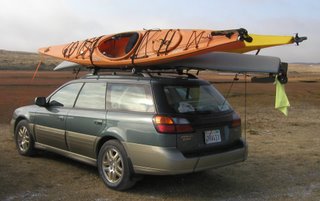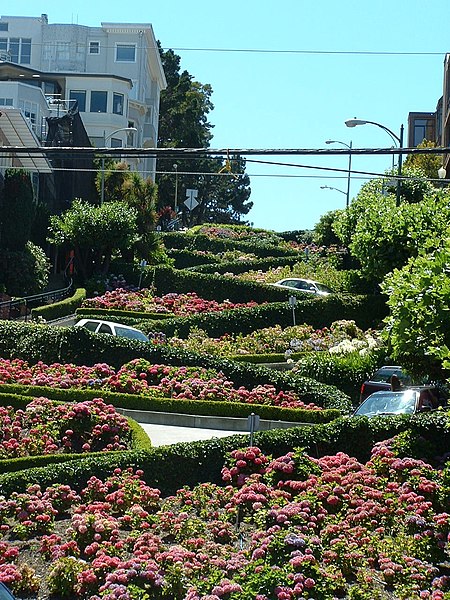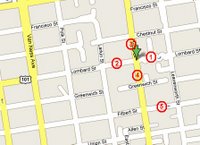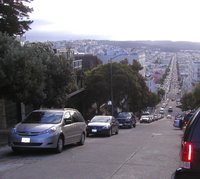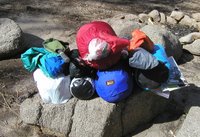Counting fish
英吾だけ‐すみません。昨日National Oceanographic and Atmospheric Administration(米国海洋大気庁)に対して河でボランティアとして鱒を数えた。
A friend told me of an interesting opportunity for yesterday. National Oceanographic and Atmospheric Administration was doing their annual survey of fish in a stream at the Soquel Demonstration Forest, an area I ride at from time to time, and they were looking for volunteers to help. It would require walking around in the stream and catching all the fish there, which reminded me of my childhood when we lived next to a pond and I spent much time catching fish, frogs, snakes, and generally getting as dirty as possible. I didn't have anything planned yesterday, so decided to join in.
It was interesting. The stream has steelhead trout in it, which are a type of trout that live in the ocean, but come back to the stream to breed (much like salmon). There are often also some other fish, such as lamprey eels, sculpin, suckers, etc., but all we caught were trout. 304 of them in a 100 yard stretch, to be exact.
I think this is done because of the steelhead. They are a threatened species. I think the streams in this area of California used to all carry trout and salmon, but now only a few do. There has been too much development and habitat destruction. The catching method was interesting. We placed nets above and below the area to be measured, then worked our way up from bottom to top. The leader used a machine that looked like a metal detector. It used electricity to stun the fish for a few seconds, while the rest of us quickly netted the stunned fish.
The catching method was interesting. We placed nets above and below the area to be measured, then worked our way up from bottom to top. The leader used a machine that looked like a metal detector. It used electricity to stun the fish for a few seconds, while the rest of us quickly netted the stunned fish. 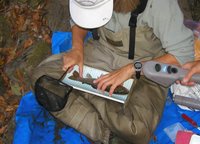 Most of the fish were small, between 50 and 125 mm long (2 to 5 inches). We did catch one very large guy who seems to have decided to reside in this stream rather than migrate to the ocean.
Most of the fish were small, between 50 and 125 mm long (2 to 5 inches). We did catch one very large guy who seems to have decided to reside in this stream rather than migrate to the ocean.
The fish were all recorded, the larger ones tagged, and then released.
Definitely a fun and educational way to spend a day.
Labels: Interesting Stuff




